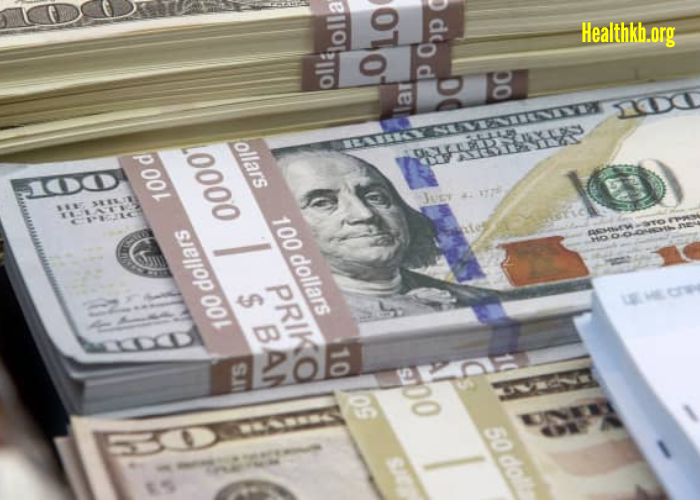
Currency exchange is a topic of global significance, influencing international trade, travel, and financial transactions. For those venturing into the world of financial markets, it’s essential to understand how currency values fluctuate, especially in regions where multiple currencies are in circulation.
One such region is West and Central Africa, where the CFA Franc (XAF) plays a pivotal role. In this comprehensive guide, we’ll explore the intricacies of Dollars en CFA, shedding light on the exchange rate dynamics between the US Dollar (USD) and the CFA Franc.
The CFA Franc: A Brief Overview
Before delving into the specifics of the exchange rate between the US Dollar and the CFA Franc, let’s take a moment to understand the CFA Franc itself. CFA stands for Communauté Financière d’Afrique or African Financial Community. It is the name of two currencies used in West and Central African countries:
West African CFA Franc (XOF): This currency is used in eight West African countries that are part of the West African Economic and Monetary Union (WAEMU). These countries include Benin, Burkina Faso, Ivory Coast, Guinea-Bissau, Mali, Niger, Senegal, and Togo.
Central African CFA Franc (XAF): This currency is used in six Central African countries that are part of the Central African Economic and Monetary Community (CEMAC). These countries include Cameroon, Chad, Central African Republic, Congo-Brazzaville, Equatorial Guinea, and Gabon.
Both XOF and XAF are fixed to the Euro at a rate of 1 Euro = 655.957 CFA Francs. This fixed exchange rate is guaranteed by the French Treasury, as these countries are former French colonies and maintain strong financial ties with France.
Understanding the USD to CFA Franc Exchange Rate
The exchange rate between the US Dollar (USD) and the CFA Franc (XAF) is a topic of interest for various reasons, including international trade, investment, and travel. Let’s explore how this exchange rate is determined and some key factors that influence it:
Currency Peg: As mentioned earlier, the CFA Franc is pegged to the Euro at a fixed rate. Therefore, changes in the USD to Euro exchange rate can indirectly affect the USD to CFA Franc rate. For instance, if the Euro strengthens against the USD, the USD to CFA Franc rate may decrease.
Economic Stability: The economic stability of the countries using the CFA Franc is a crucial factor. Political stability, inflation rates, and overall economic performance can influence investor confidence and, subsequently, the exchange rate.
Global Economic Factors: Like all currencies, the USD to CFA Franc rate is influenced by global economic events. Factors such as US economic data, geopolitical events, and global market trends can impact the exchange rate.
Speculation: Traders and investors in the foreign exchange market engage in speculation, buying and selling currencies based on their expectations of future exchange rate movements. Speculative activities can lead to short-term fluctuations in exchange rates.
Central Bank Intervention: Central banks in West and Central African countries may intervene in the foreign exchange market to stabilize their currencies. These interventions can influence the USD to CFA Franc rate.
Trade Relations: Bilateral trade relations between the United States and countries using the CFA Franc can also affect the exchange rate. Trade imbalances and trade agreements can impact the demand for USD.
Practical Implications of USD to CFA Franc Exchange
Understanding the USD to CFA Franc exchange rate is not only essential for traders and investors but also for individuals and businesses engaged in international transactions. Here are some practical implications:
Import and Export: Businesses involved in international trade with West and Central African countries need to monitor exchange rates. A favorable rate can make exports more competitive, while an unfavorable rate can increase import costs.
Travel and Tourism: Travelers to West and Central Africa need to consider exchange rates when exchanging USD for CFA Francs. Exchange rates can impact the purchasing power of tourists.
Investment: Investors looking to invest in West and Central African markets must factor in exchange rate risks. Currency fluctuations can affect the returns on investments denominated in CFA Francs.
Remittances: People sending money to family members in West and Central Africa need to be aware of exchange rates, as these rates can affect the amount received by beneficiaries.
Factors Influencing the USD to CFA Franc Exchange Rate
To gain a deeper understanding of the USD to CFA Franc exchange rate dynamics, let’s explore some of the key factors that influence this rate in more detail:
Currency Peg: As previously mentioned, the CFA Franc is pegged to the Euro at a fixed rate. This means that changes in the Euro to USD exchange rate can indirectly impact the USD to CFA Franc rate. For instance, if the Euro strengthens against the USD, it may lead to a lower USD to CFA Franc exchange rate.
Economic Stability: The economic stability of the countries using the CFA Franc plays a crucial role in exchange rate determination. Political stability, low inflation rates, and strong economic performance can boost investor confidence in the currency, leading to a more favorable exchange rate.
Global Economic Factors: Like all currencies, the USD to CFA Franc exchange rate is influenced by global economic events. Economic data releases from the United States, geopolitical developments, and global market trends can impact the exchange rate. For example, strong US economic data may strengthen the USD, leading to a higher USD to CFA Franc rate.
Speculation: Traders and investors in the foreign exchange market engage in speculation, buying and selling currencies based on their expectations of future exchange rate movements. Speculative activities can lead to short-term fluctuations in exchange rates as traders react to news and events.
Central Bank Intervention: Central banks in West and Central African countries may intervene in the foreign exchange market to stabilize their currencies. For instance, if the CFA Franc is depreciating rapidly, a central bank may sell its foreign currency reserves to support the currency. These interventions can influence the USD to CFA Franc rate.
Trade Relations: Bilateral trade relations between the United States and countries using the CFA Franc can affect the exchange rate. Trade imbalances, trade agreements, and changes in trade policies can impact the demand for USD. For example, an increase in US exports to these countries may lead to a higher demand for USD and a stronger USD to CFA Franc rate.
Conclusion: Navigating the World of Dollars en CFA
The exchange rate between the US Dollar and the CFA Franc is a complex interplay of economic, financial, and geopolitical factors. It impacts various aspects of international transactions, from trade and investment to travel and remittances. As the global financial landscape continues to evolve, staying informed about exchange rate dynamics is crucial for individuals and businesses engaging with West and Central African countries.
Dollars en CFA represents more than just a currency conversion; it symbolizes the gateway to understanding and navigating the financial interactions between the United States and the nations of West and Central Africa. Whether you’re a trader, investor, traveler, or business owner, a solid grasp of the USD to CFA Franc exchange rate is an invaluable asset in today’s interconnected world.



